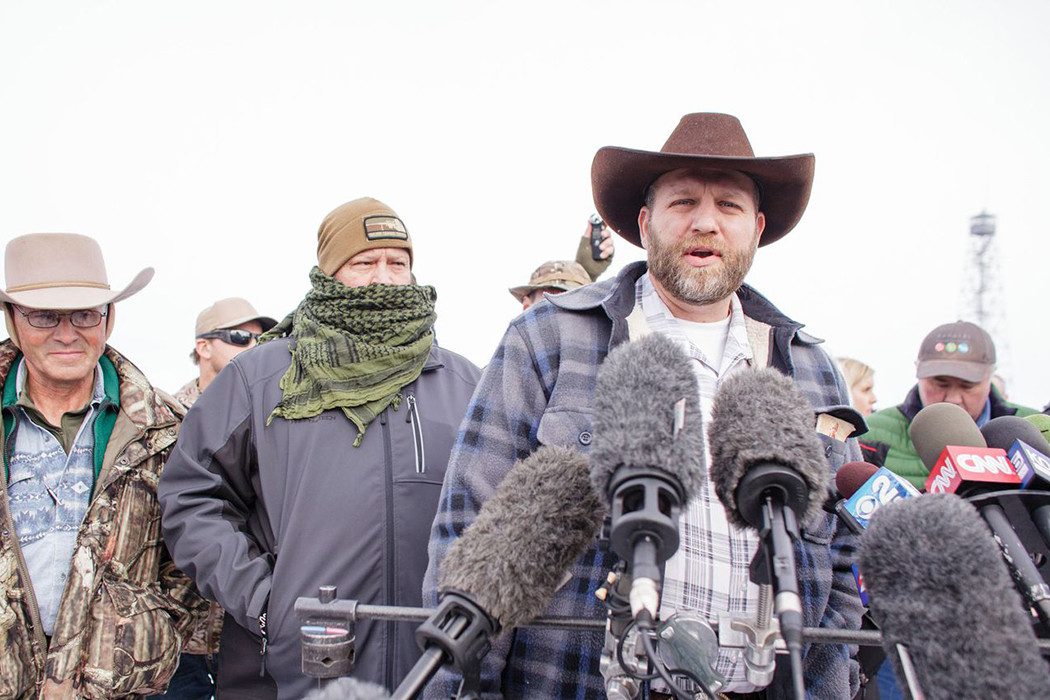The media in both India and the US need to stop acting like echo chambers for the Right.
As I write these lines (in late January, if you’re keeping track), a group of armed right-wing militants is beginning the fourth week of its occupation of a government-owned wildlife refuge in Oregon, in the northwestern United States. Drawn from various anti-government militias that populate rural America, the militants are protesting the imprisonment of two cattle ranchers who set fire to government-owned land, but their larger goal is to spark an armed right-wing uprising.If you have not heard about this rather alarming turn of events, don’t worry—you’re not alone. Even in the United States, the mainstream media, after its initial, breathless coverage of the event, has became rather silent on the matter. Until the militants make their next provocation, the media is, on the whole, willing to let them occupy the wildlife refuge in relative peace.
In the initial flurry of news reports and web commentary, many pointed out the hypocrisy of both government officials and mainstream media sources in their response to the militia’s actions. Particularly noteworthy was the contrast between the militants’ occupation and the Black Lives Matter campaign, a loosely organised movement that has emerged as a protest to the increasingly well-publicised pattern of police violence against African-Americans and the continuing oppression facing blacks in America. Plan a Black Lives Matter protest, and you can expect to have your event disrupted by riot police, who—in America these days—resemble an invading army more than a police force. Collect a bunch of guns and take over a government building (if you’re right-wing and white, of course), and the authorities will calmly negotiate with you for weeks on end.
Plan a Black Lives Matter protest, and you can expect to have your event disrupted by riot police. Collect a bunch of guns and take over a government building (if you’re right-wing and white, of course), and the authorities will calmly negotiate with you for weeks on end.
Of course, the United States is not the only country where violent right-wing groups are allowed to act with relative impunity. In many ways, the similarities between US right-wing militias and Hindutva organisations are striking. Both, of course, embrace religious extremism. The militia members occupying the government building in the United States are reportedly motivated by their Mormon faith; one of the militia leaders claimed that their actions had divine sanction. But perhaps the most crucial similarity is the sense of “aggrieved entitlement” that both groups manifest, which is closely connected to their questionable, simplistic view of history.
The sociologist Michael Kimmel coined the term “aggrieved entitled” to describe privileged groups who fear losing their privileges due to both the assertion of oppressed groups and the vicissitudes of a globalised economy. Somehow, certain white males in America and upper-caste Hindus in India have convinced themselves that they are victims seeking to avenge historical wrongs. Hindutva distortions of history (and the false binary they draw between India’s glorious ancient “Hindu” history and catastrophic medieval “Muslim” history) are well known.
American militias don’t reach as far back into history, or else they would stumble upon Native American history, which they seek to erase. But they also idolise the old glory days, in this case the days of the cowboy, when vast swaths of the American West were first being settled by white people. In this version of history, the early settlers were rugged, self-sufficient people, toughing it out alone in a rugged new landscape, establishing new homes through sheer grit and ingenuity. This golden age ended with the intrusion of the meddling national government, which insisted on imposing regulations on things like grazing and gobbling up land that rightfully belonged to the settlers.
Somehow, certain white males in America and upper-caste Hindus in India have convinced themselves that they are victims seeking to avenge historical wrongs.
This view of history is, not surprising, a false one. The American West was not an empty landscape, and the early settlers did not conquer it on their own. It was inhabited by a large number of different, often competing, Native American tribes, who were dispossessed, outmanoeuvred, and—often—slaughtered in cold blood by the US Army. And the role of the national government, along with other “outsiders,” was not confined to this original sin.
The current conflict largely centres on grazing and the demands of various cattle ranchers to be freed from supposedly onerous government regulations so that they can go back to their original, self-reliant ways. But the cattle ranching community was always part of larger political and economic networks. The national government continued to play a large role, supporting the construction of the railways that would be used to transport cattle to markets and buying out ranching companies that were struggling financially. And even small-scale ranchers had connections to larger networks of capital, including banks that provided loans and businessmen in California seeking to strengthen their hold on the cattle industry.
The current pleas of right-wing American militias that they are the oppressed, formerly self-sufficient victims of history thus ring hollow, just like the self-pitying cries of upper-caste Hindutva advocates, who fight against reservations and shout themselves hoarse about government “appeasement” of minorities. But these cries get amplified in the echo chamber of the right-wing media, in both America and India. They are contested in more left-wing media sources, but—in both countries—the Right has, in recent decades, been in the ascendant.
These cries get amplified in the echo chamber of the right-wing media, in both America and India. They are contested in more left-wing media sources, but—in both countries—the Right has, in recent decades, been in the ascendant.
Naturally, there are also differences between the right-wing movements in these countries. The peculiar American obsession with guns, for instance, has not yet been echoed in India (thankfully). And, while the American militias see the national government as their chief enemy, Hindutva groups enjoy the tacit (and often overt) support of the current government.
And perhaps in India, the current alignment of the central government and violent right-wing groups has finally punctured the illusion that the latter is on the “fringe.” The mainstream media was notoriously enamoured of Modi during his 2014 campaign, repeatedly claiming that he had distanced himself from the more openly violent and aggressive side of Hindutva. But Modi’s sheen is starting to fade, even among his former sycophants, as Hindutva groups have launched increasingly brazen attacks on Muslims and Dalits. The mainstream media has hardly redeemed itself, but it is becoming difficult for reporters to ignore the blazingly obvious. American media sources could take a cue from their Indian counterparts and realise that the emboldened “fringe” groups in the country are anything but.



